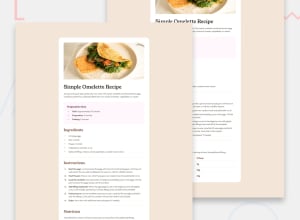
Design comparison
SolutionDesign
Solution retrospective
What are you most proud of, and what would you do differently next time?
I am pleased with the accuracy of the replication, in the future I would like to use more responsive typography.
What challenges did you encounter, and how did you overcome them?The vanilla CSS became difficult to read when tweaking small things, I mitigated these difficulties by separating out a few styles but I need to learn a better way to organize my CSS in the future.
What specific areas of your project would you like help with?Are the semantics and organization of my HTML acceptable? If not, what could I do to improve it?
How could I organize my CSS better to prevent it turning into an unreadable mess?
Community feedback
Please log in to post a comment
Log in with GitHubJoin our Discord community
Join thousands of Frontend Mentor community members taking the challenges, sharing resources, helping each other, and chatting about all things front-end!
Join our Discord
